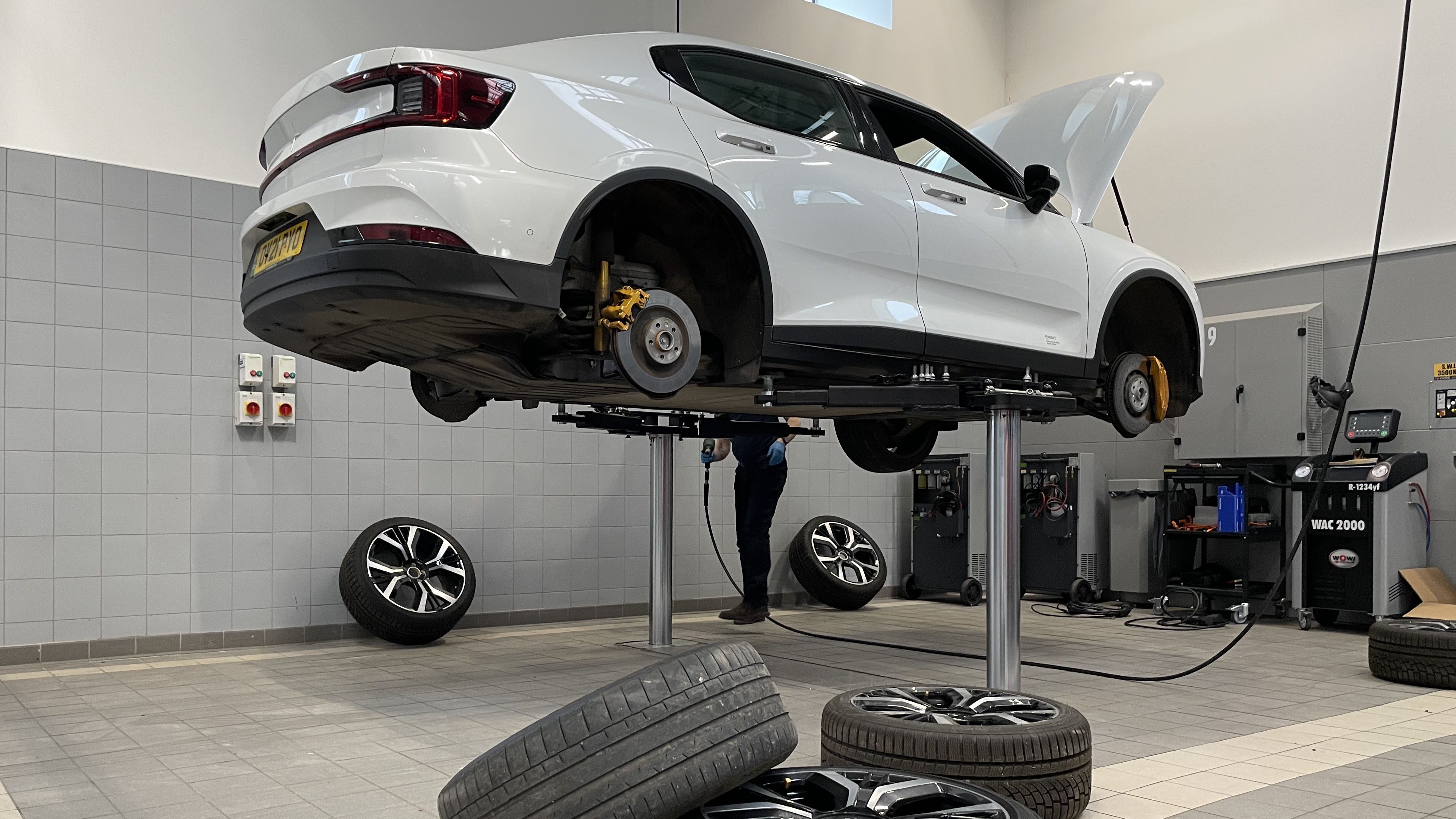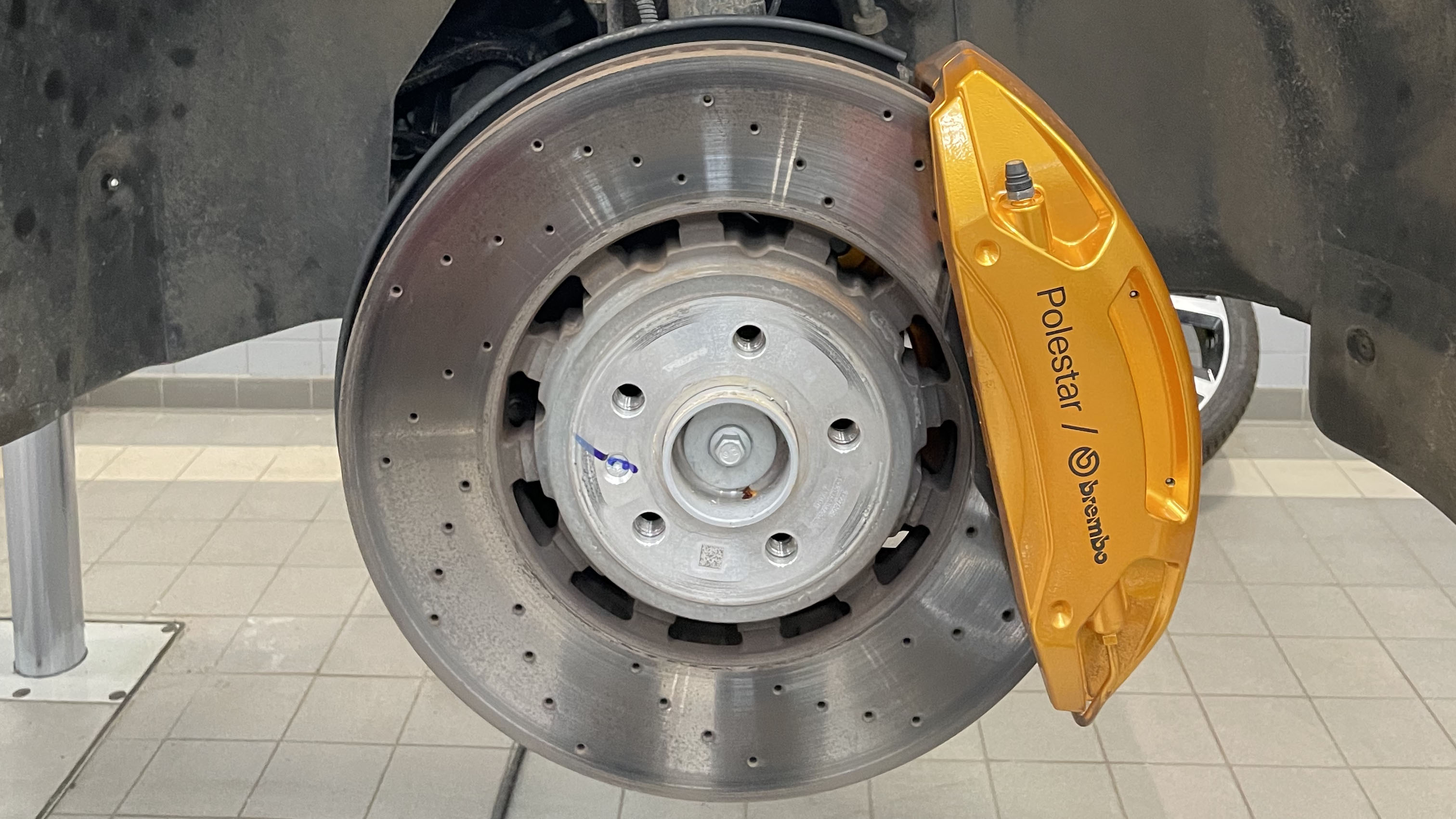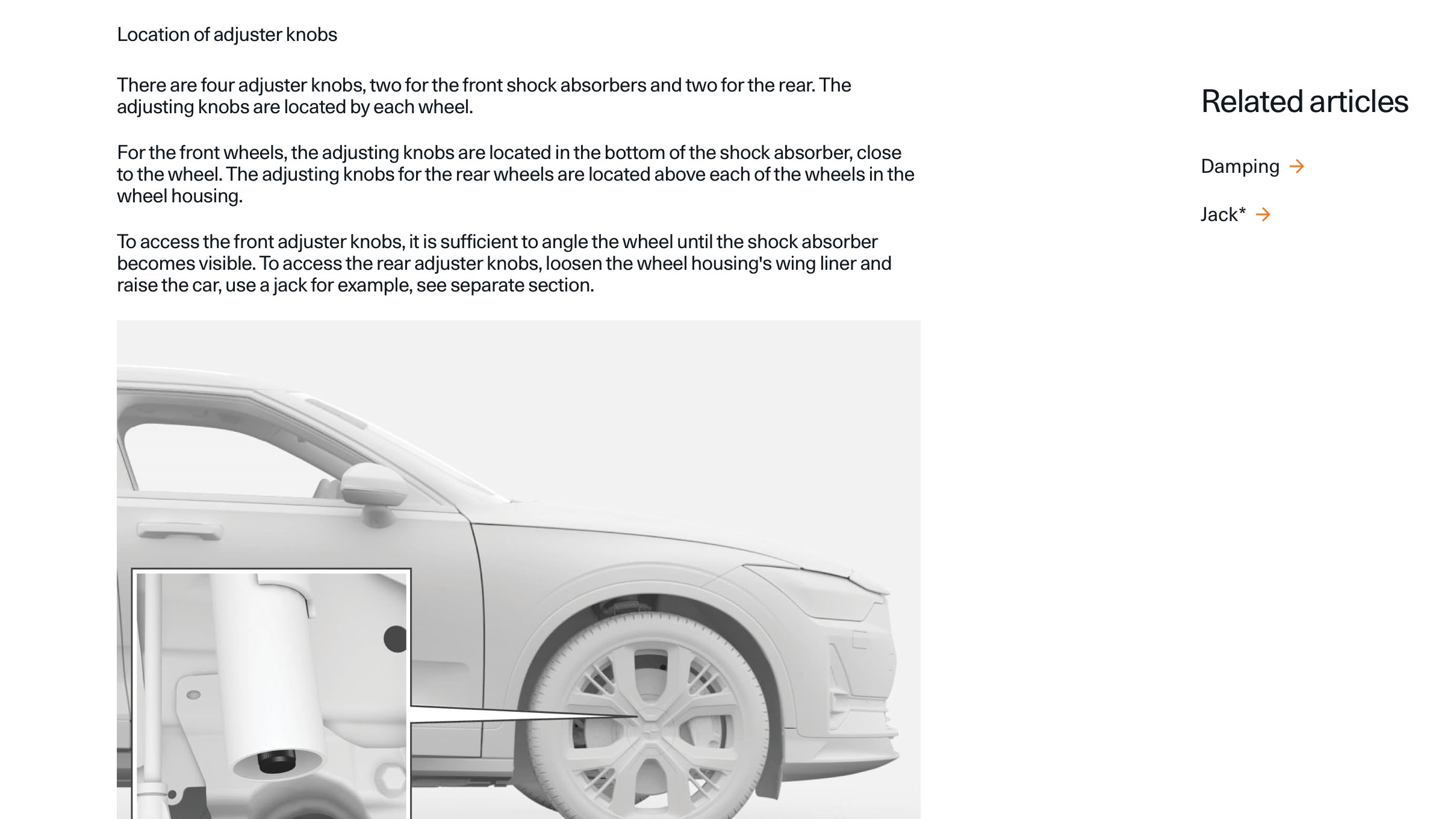
Polestar 2 Long Range AWD Performance Pack - long-term review
£45,900 (£58,900 as tested)
SPEC HIGHLIGHTS
- SPEC
Long Range AWD Performance Pack
- Range
292 miles
- ENGINE
1cc
- BHP
408bhp
- 0-62
4.5s
Polestar 2: adjusting the suspension for a better ride
This month it’s all about suspension and tyres - because as per predictions, I’ve been unable to leave either alone. Well, if you would give a person adjustable Öhlins dampers, then you jolly well better expect them to adjust them. But in a sneaky offer of convenience, Polestar had sourced me some Swedish Nokian winter tyres and said that I could use their ramps to switch everything around and play with the dampers - which now I think about it, simply gave their technicians the ability to babysit and make sure I didn’t do anything stupid. Which isn’t necessarily a bad plan…
And so, off to a technical centre and a rather wonderful advisor called Richie who knew more about Polestar service than is usually advisable.
Wheels off with the Continental SportContact 6 245/40/R20s, new wheels on with Nokian WR A4s in the same size and width. Except with many more sipes and general winter patterning. Now, I had nothing against the Contis, but with winter hitting hard in my part of the countryside, I had noticed that they had a tendency to be a little bit sketchy on icy roads and with deep standing water - not uncommon in my part of Lincolnshire. I’m also a big advocate of winter tyres generally - you wouldn’t believe the difference in stopping/going on the right rubber for the conditions.
Then there was a bit of twiddling with the dampers. Which is where it gets complicated. Now, the front dampers are adjusted via a knob that points downwards, and you can get to it without ramps - though it is much easier with the wheel off. You adjust the fronts by finding point zero by turning the knob clockwise as seen from below, and work from there. The rears are mounted the other way up, and are accessed by unscrewing the wheelarch liner and removing a big rubber dustcap. And you find zero by rotating the knob clockwise as seen from above. But it gets confusing quickly when chatting and moving from side to side on the car. And also because I was basing my calculations from a hastily-read service manual on the internet. Which, to be fair, is actually pretty good.
But this is where I think I may have messed up.
The P2, as it came to me, felt like it was set up for Track (officially position 1 and 2 respectively front to rear). But it actually wasn’t, and was more somewhere in the middle (I counted 7 clicks both ends). Full comfort is supposed to be 18/20 clicks front/rear, so, wanting to be normal, I went for 10 clicks on both ends. I think. And I say that because the farthest rotation stop is soft, so I’m not sure whether I got to the end.
The thing is, the P2 now rides far better than it did before - it’s lost some of the brittleness over bumps - but I think I can go further. A lot further. I’ve definitely got the car at level pegging across the axles, but the back is still a bit hard. The complication being that I also think the Nokians have also softened off the ride. Now, that can’t be extra sidewall - they’re the same 40 profile - so it must be sidewall structure itself. More to come on this as I figure out my left from right, and my clockfaces.
The bigger bombshell appears to be that after downloading some over-the-air software the same night, the P2 is now happily doing 20-30 more real-world miles on a full charge. Temperatures are maybe a tad warmer (2-3 degrees), but now I have no idea whether or not the positive effects are down to tyres or software, or a bit of both. I’ve basically gung-ho’d my testing into one indecipherable mess of data which I cannot for the life of me figure out. Absolutely my fault, and nothing to do with the car, but now I don’t know what to recommend. Sorry.
Still, positive results in some ways. I think I can soften off the damping by another five clicks all-round without challenging the steering or handling too much, and the Nokians are revelatory in cold weather even if there’s no actual snow. They have less ultimate grip than the Continentals, but what you do get - especially on wet or muddy lanes - appears to be more consistent and reliable. In a big heavy car in winter, that’s pretty much what I was looking for. Bonus? It’s still on the big, good-looking wheels, although my golden valve covers (part of the Performance Pack) have now burnished themselves back to silver, which is faintly annoying and yet absolutely inconsequential.
In other news, the forward sensors block pretty much instantly in winter - leading to lots of ‘blocked’ and ‘error’ messages on the dash, and the same goes for the 360-degree cameras - especially the one on the back. I sort of expected more from a ‘Swedish’ brand. Oh for one of the cameras that pops out from under a badge. But let’s face it, more real-world range and a better ride all in a day’s work? You can’t fault it.
Featured

Trending this week
- Car Review
BMW iX3






